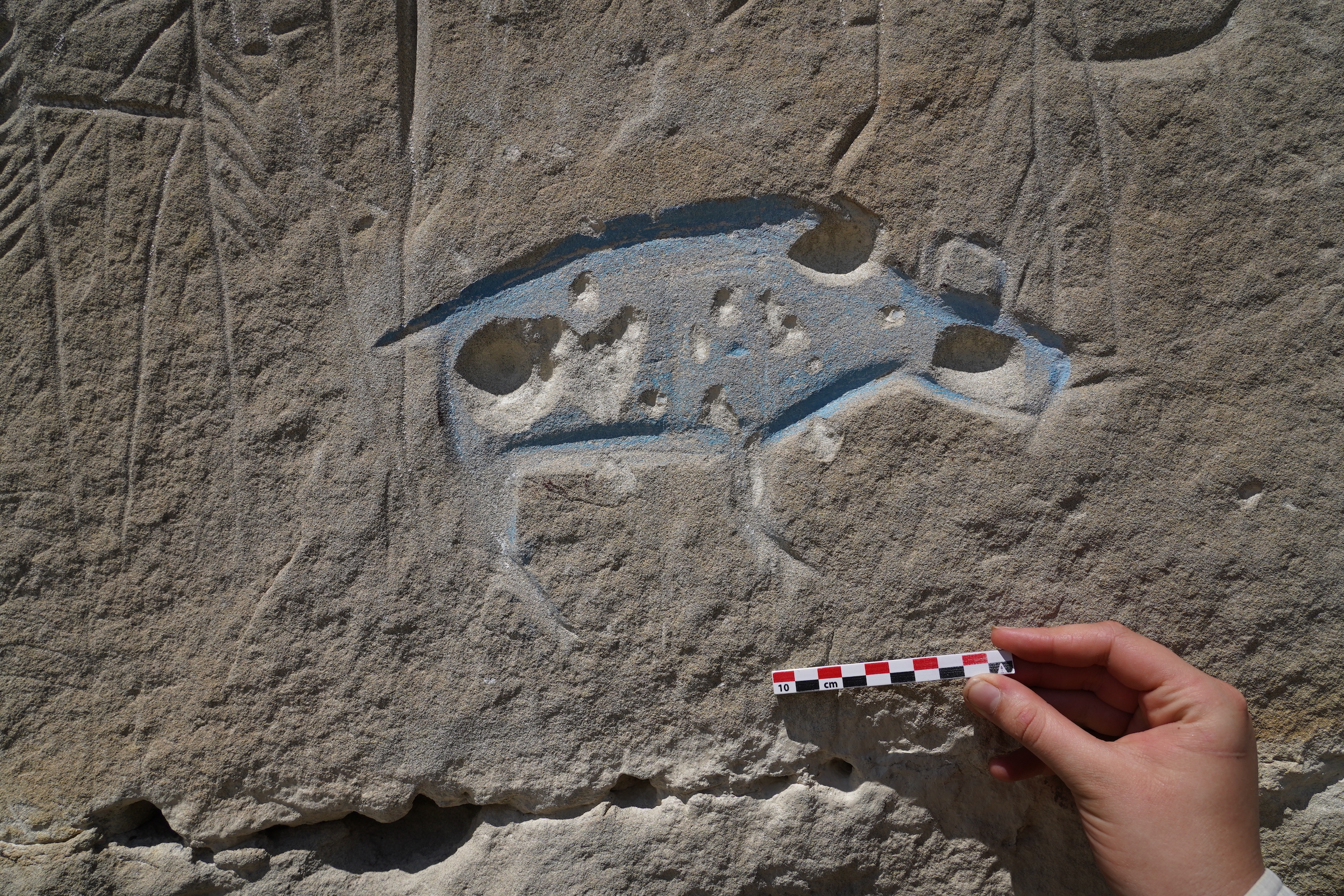Wyoming is home to hundreds of Indigenous rock art sites, spanning petroglyphs and pictographs dating back centuries spread across the state. But approximately a quarter of these sites have been targeted by vandalism and defacement, according to a new report.
On May 1, Wyoming State Archaeologist Spencer Pelton presented these findings to the Select Committee on Tribal Relations in Fort Washakie. This year, legislators are prioritizing issues such as the protection and preservation of Indigenous rock art sites — drawings, engravings, carvings, and stencils on rock shelters, formations, boulders, and caves considered to be sacred cultural heritage to their creators and communities. The World Heritage Convention has characterized rock art sites as “among the most vulnerable on the World Heritage List” due to their susceptibility to climate change and vandalism.
The Wyoming Cultural Records Office created a list of 666 sites across the state to provide a preliminary assessment of damage to rock art. Out of this list, 157 sites — 24% — were indicated as either vandalized or defaced. A total of 88 sites are located on federal land, whereas 15 are situated on state land and 47 on private properties.
In a case study conducted at Pine Canyon, located in Wyoming’s southwest region, state officials noted four types of vandalism consisting of inscribed names, initials, and dates; painting; or firearm damage. The initials, names, and dates were almost always carved into the rock face, whereas firearm destruction was usually present where “a logical target” was found, as in the case of a bison petroglyph that was riddled with bullet holes.
“An additional form of vandalism is removal of rock art images from panels through chisels and explosives for commercial sale or collection,” Pelton told Hyperallergic, noting that this destruction is generally uncommon, but “probably the most severe form of vandalism that can occur.”
Pelton noted that the next step will be strengthening rock art legal protections through state statutes.
“That’s a long process, but I am encouraged that we have lawmakers interested in pursuing it,” Peloton said.
Currently, protections for rock art are dependent on the Antiquities Act of 1906, the Archaeological Resources Protection Act of 1979, and the 1966 National Historic Preservation Act, which established the National Register of Historic Places and the State Historic Preservation Office program. In 1935, state legislators also passed the Wyoming Prehistoric Ruins Act, which provides protections for prehistoric natural features in the state. It also requires permits for any excavation of prehistoric ruins and ancient markings on any state or federal land.
“Once we have some stronger statutes, I could foresee a large collaborative effort between State, Federal, and Tribal governments to document rock art vandalism and develop some site-specific measures for long-term preservation,” Pelton said, adding that while there are no definitive plans for this project yet, he believes “there’s enough momentum behind the effort to see it happen in the next several years.”

